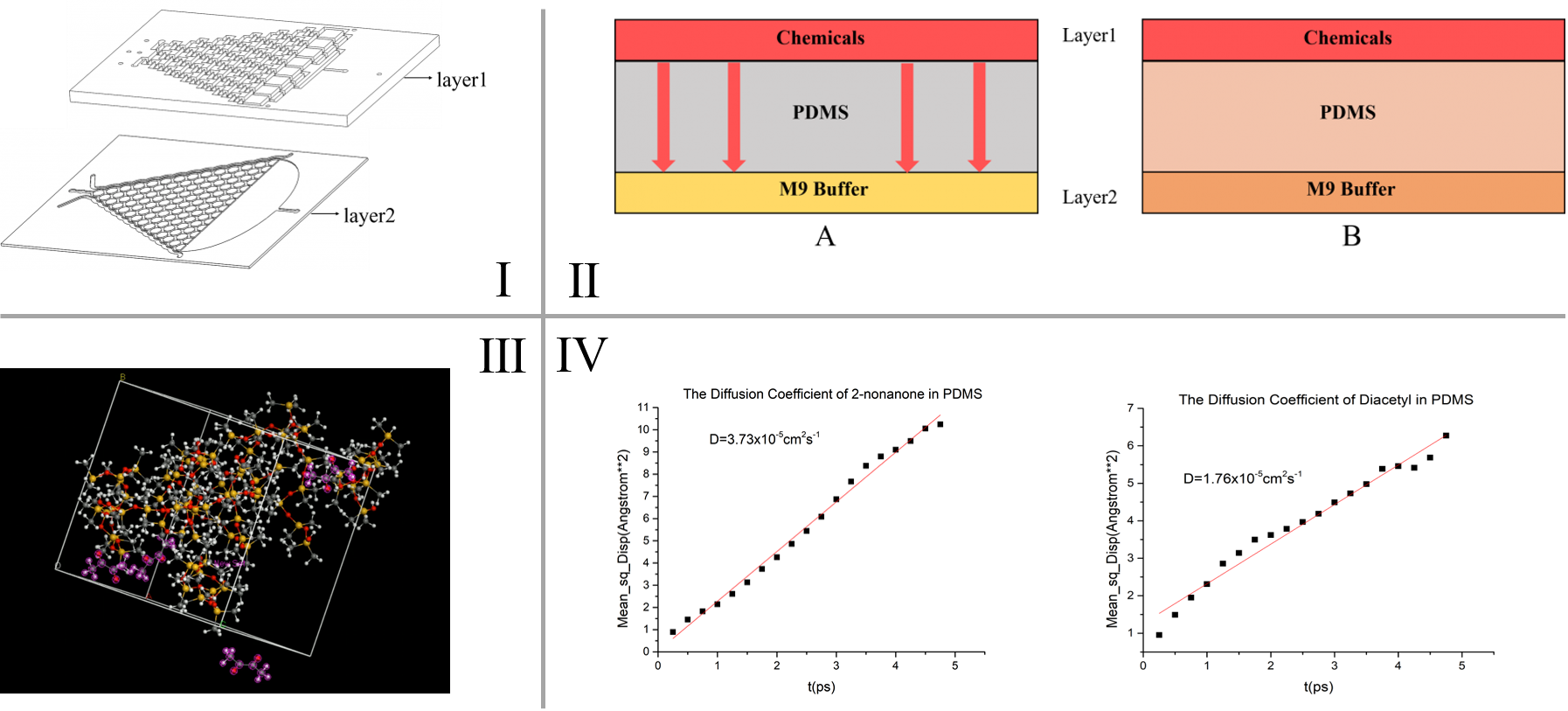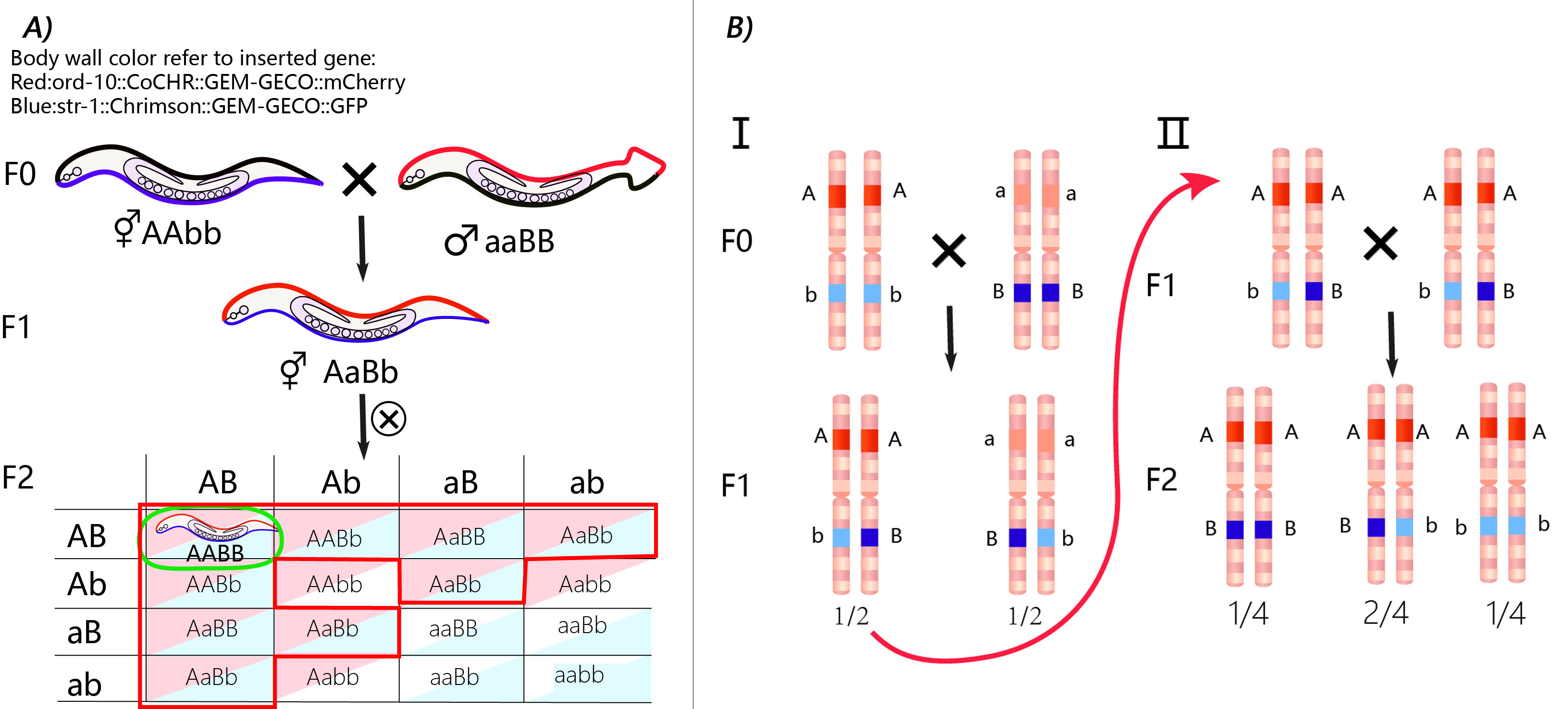| Line 58: | Line 58: | ||
Mate the 2 strains to get the hybrid offspring of red fluorescence on AWA neuron and green fluorescence on AWB neuron. | Mate the 2 strains to get the hybrid offspring of red fluorescence on AWA neuron and green fluorescence on AWB neuron. | ||
| − | Comparing the calculation | + | Comparing the calculation and the experiment results, we demonstrate that the 2 strains that we finally get have the insertion gene on different chromosomes. |
{{SUSTech_Image_Center_fill-width| filename=T--SUSTech_Shenzhen--model--geneticView.png |width=1000px|caption=<B>Fig.4 A) Stable inheritance probability. B)Chromosome crossing probability</B>}} | {{SUSTech_Image_Center_fill-width| filename=T--SUSTech_Shenzhen--model--geneticView.png |width=1000px|caption=<B>Fig.4 A) Stable inheritance probability. B)Chromosome crossing probability</B>}} | ||
Revision as of 15:52, 1 November 2017
Overview
Model
Contents
Modeling is usually used to make sense of the experimental discovery in traditional biological studies. In this synthetic biology project, we believe that carefully carried out modeling will be critical for the experimental design and data analysis at different stages of the project. We hope to demonstrate that the modeling is especially helpful to finalize the microfluidics chip design, and determine the distribution of the C.elegans (Caenorhabditis elegans) in microfliudics, as well as the transfection of the MiniMos in our experiment.
Model for Chemical Diffusion
In our project, we are required to insert a new gene into the C. elegans’ (Caenorhabditis elegans) genome and the worms will express two channelrhodopsins in the olfactory receptor neuron pair. We designed the Gaussian Plate (a microfluidic chip) to test their response to the chemicals and determine whether those exogenous genes will affect the olfactory receptor neuron pair.
We built this model to concern 2 diffusion steps in our microfluidic device:
The process to form an uniform concentration gradient
The chemical diffusion through the PDMS (Polydimethylsiloxane) layer
Time requirement of the 2 process are calculated based on the Einstein and Brownian movement equation t=\frac{w^{2}}{2D} and Fick’s second law (\frac{\partial C}{\partial t}=D \frac{\partial^2 C}{\partial x^2}). The calculation results are used to guide our experiment design.
Model for Worms Locomotion
This model describes how microfluidics Gaussian distribution plate works when we use this device to test C.elegans’ preference in the plate.
Model for Neuron Network
The purpose of this model is to select promoters used in downstream neurons of C.elegans’ which have greatest possibility to be lighted on when AWA and AWB (the main neurons in our project) are actived.
Model for Genetic Probability
This model describes the process in which we get 2 worm strains with stable genetic traits and the hybrid offspring. It was proposed at the beginning of our project to optimize our experimental design concerning how many worms we need to inject and how long it will take to make sure we get the expected result before iGEM Jamboree.
These 3 steps are considered in the model:
Inject plasmid (odr-10::CoCHR::GEM-GECO::mCherry and str-1::Chrimson::GEM-GECO::GFP) through miniMOS system.
Select the rescued worms using mCherry and GFP.
Mate the 2 strains to get the hybrid offspring of red fluorescence on AWA neuron and green fluorescence on AWB neuron.
Comparing the calculation and the experiment results, we demonstrate that the 2 strains that we finally get have the insertion gene on different chromosomes.
References




